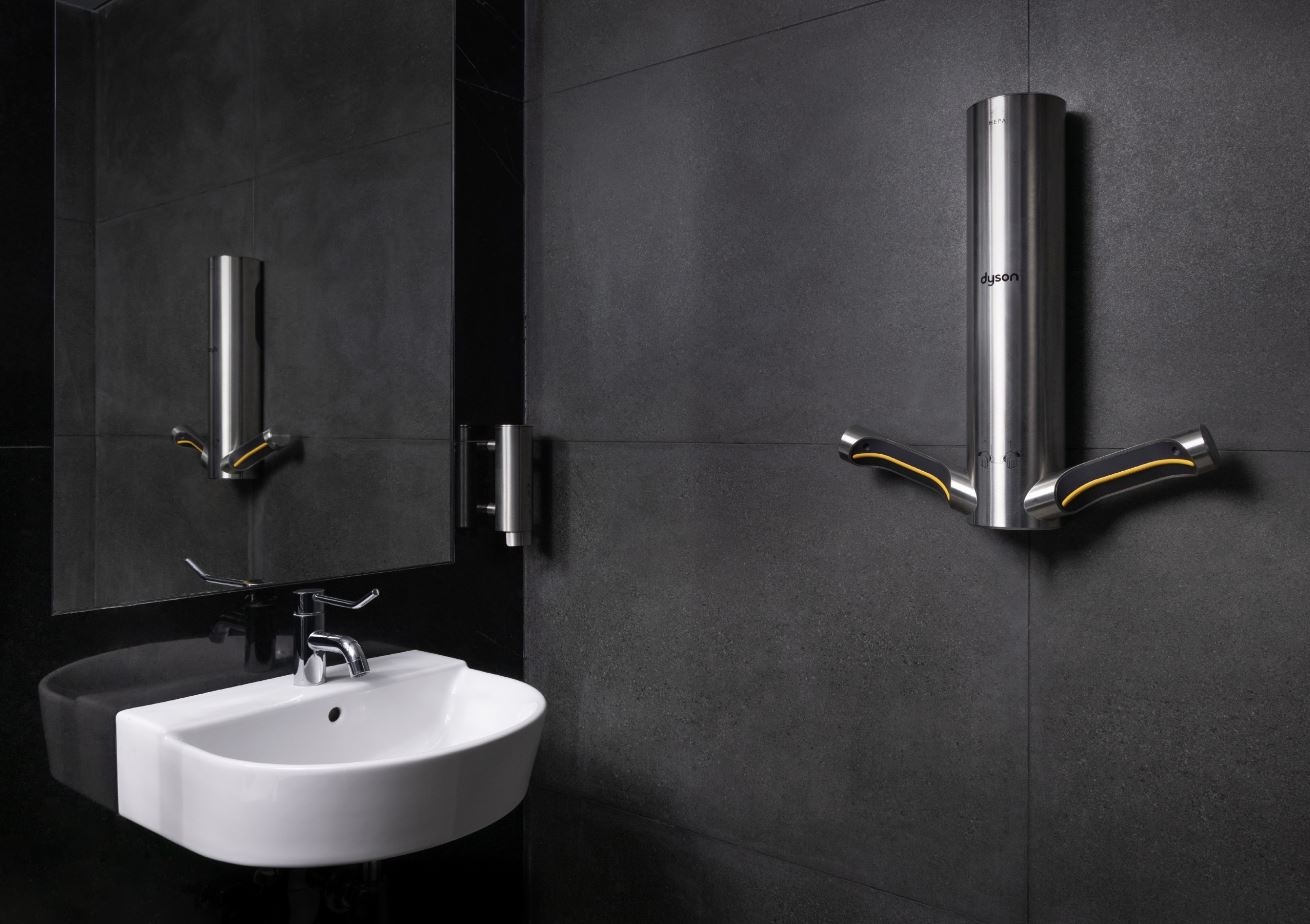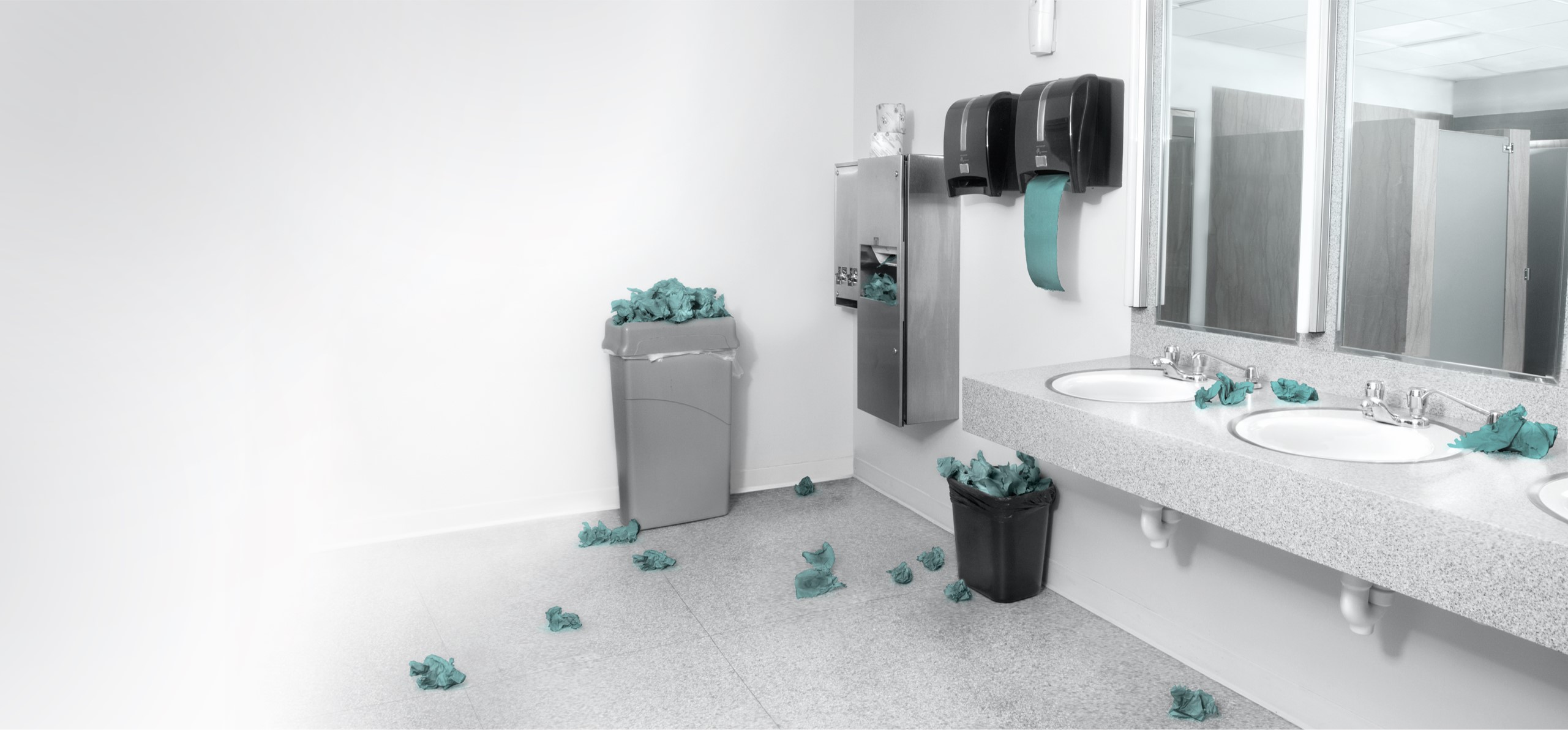
Dyson’s past experiences are changing the future of key amenities and pushing the brand to implement more innovative, environmentally-friendly solutions
In the wake of COP26 and with the implementation of initiatives like the Government’s Net Zero strategy, businesses across all sectors are racing to reduce their carbon footprint (1). In fact, almost two-thirds of companies in the UK and northern Europe cite sustainability as a key part of their success strategies for the years ahead (2). But change isn’t just about looking at how the business functions—it can start with the core facilities and products found in our commercial spaces.
Dyson’s past experiences are changing the future of key amenities and pushing the brand to implement more innovative, environmentally-friendly solutions throughout. One of the key areas within a business’ space that can reap the rewards of this is the washroom. Experiencing high volumes of traffic, the washroom must be made as hygienic and sustainable as possible, both for user confidence and to help businesses lower their carbon footprint. In fact, Dyson’s 2021 Washroom Attitudes Survey showed that 75% of respondents are washing their hands five or more times a day, illustrating the importance of clean washroom facilities (3). Yet are some practices as beneficial for people and the planet as they seem?

The paper towel problem
At a time where 75% of people are concerned about the use of single-use consumables, it’s clear that using paper towels is an unsustainable solution to an ongoing problem (4). But with research showing that damp hands can transfer up to 1,000 times more bacteria than dry hands, facilities managers need to provide a way for users to dry their hands thoroughly and sustainably (5).
Many businesses may install a cheaper solution like a paper towel dispenser, but its impact on the environment can be detrimental. Globally, millions of tonnes of paper towels are used every year, with most going into landfill since they cannot be recycled (6). What’s more, the manufacturing process for paper towels includes transportation of products, leading to further CO₂ emissions, and involves a large amount of water; it takes over 20,000 gallons to make one ton of paper towels (7).

The hand dryer solution
Sustainability is not just a business goal, but one that translates to consumer values too. Fortunately, businesses can upgrade their washrooms with more innovative and reusable hand drying solutions, without compromising on hygiene or quality. A common alternative to paper towels is hand dryers.
Yet many older warm air dryers prompt hygiene and environmental concerns amongst users, and often rightly so. For example, 40% of people are worried about pressing physical buttons on a hand dryer, and 24% believe they could be drying their hands with unclean air (8). Alongside this, archaic models could be consuming high amounts of energy, contributing to a business’ carbon footprint.

At Dyson, their innovative technologies negate these concerns. All Dyson hand dryers include air-cleaning HEPA filters and touchless activation as standard. What’s more, Dyson hand dryers are just as hygienic as using a paper towel, and the Airblade 9kJ model produces up to 85% less CO₂ than paper towels (9 and 10).
As reference, Welcome Break have also installed Dyson low energy Airblade 9kJ hand dryers across all UK locations, each of which uses only a sixth of the energy of conventional hand dryers. The 9kJ hand dryers are helping Welcome Break to reduce its CO₂ washroom emissions by 71,269,077g – a total equivalent to the emissions released when flying for 791 hours a Boeing 757 (11). Implementing this simple change to all of its washrooms is allowing Welcome Break to further its sustainability mission, while also providing customers with a hygienic and efficient way to dry their hands.

As organisations continue to drive their sustainability agendas forward, they must not forget the core facilities within their commercial spaces. In the race to Net Zero, facilities managers must work with business leaders to change the narrative surrounding single-use products like paper towels and upgrade to innovative technology solutions, which support sustainability goals and protect the future of our planet.
References
1. Net Zero Strategy: Build Back Greener, HM Government, https://assets.publishing.service.gov.uk/government/uploads/system/uploads/attachment_data/file/1033990/net-zero-strategy-beis.pdf
2. Frost & Sullivan, Digital Sustainability: The Path to Net Zero for Design & Manufacturing and Architecture, Engineering, & Construction (AEC) Industries, https://damassets.autodesk.net/content/dam/autodesk/www/campaigns/emea/docs/FS_WP_Autodesk_DigitalSustainability.pdf
3. Survey conducted in the UK in July 2021 with 2,000 respondents, aged 18 years-old or above. This is part of a global survey done across 20 countries comprising of 15,100 respondents in total.
4. As above
5. Epidemiology & Infection, Residual moisture determines the level of touch-contact-associated bacterial transfer following hand washing, December 199
6. https://www.dyson.co.uk/inside-dyson/sustainability/overview
7. Creighton University, Forests or paper towels?
https://www.creighton.edu/fileadmin/user/sustainability/docs/creighton-9.pdf
8. As above
9. Frontiers in Public Health, Aerosols and Bacteria From Hand Washing and Drying in Indoor Air, February 2022 https://www.frontiersin.org/articles/10.3389/fpubh.2022.804825/full
10. Average electricity price £0.1/kWh as of December 2018. See our calculations.
11. https://www.welcomebreak.co.uk/about/sustainability/
Find out how Dyson Airblade™ can help your sustainability goals here
Photography courtesy of Dyson






















